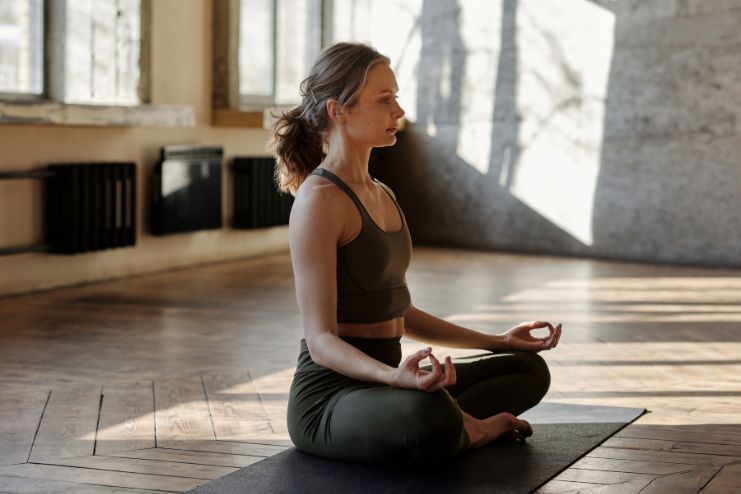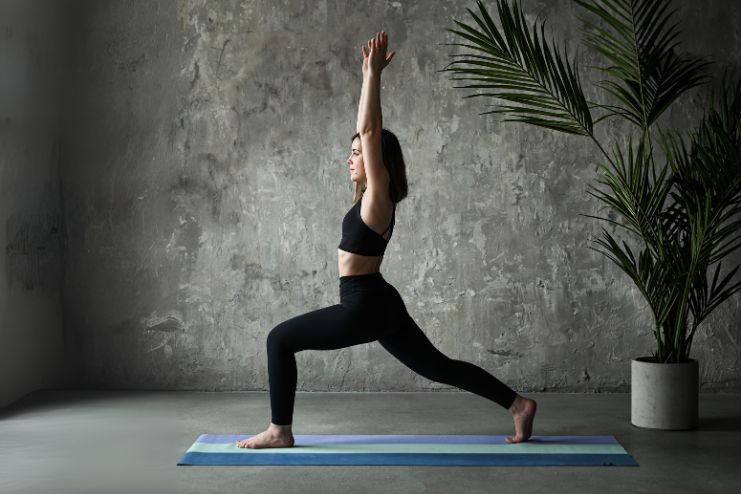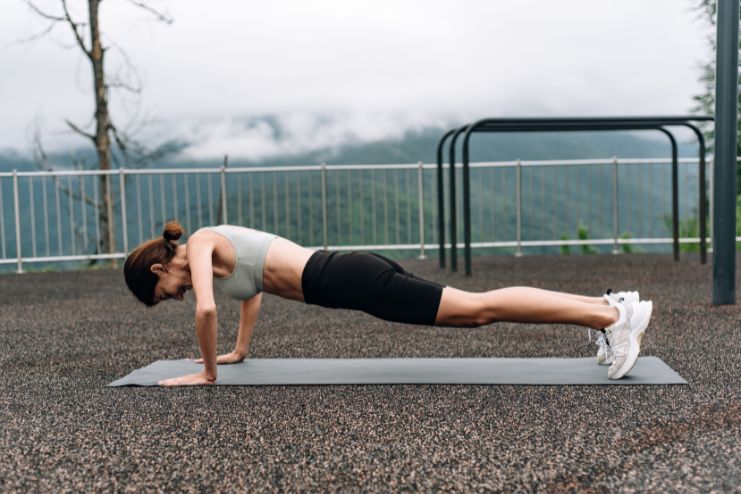Affiliate Disclaimer
Some links in this article are affiliate links. We may earn a small commission if you make a purchase through these links, at no extra cost to you. We only recommend products we find useful to our readersExercise and physical movements are an important part of our lives. As people move towards a healthier lifestyle, they choose to include exercise in their routines. However, the misconception is that aggressive and intense workouts are the only way to exercise. Cardio is a cult favorite these days, and people often think that hitting the gym for two hours or more and engaging in intense workouts are the only effective ways.
On the contrary, low-impact exercises are just as effective but often overlooked in favor of high-intensity routines. Whether you live in an apartment, have joint concerns, or simply prefer a noise-free exercise routine, silent, low-impact exercises offer numerous benefits without excessive strain.
This article will discuss low-impact workouts—what they really are, why they’re great for you, and how they compare to high-impact exercises. We’ll also clear up some common myths about them and introduce you to the world of silent workouts (yes, effective workouts without all the jumping and noise!). By the end of this article, you’ll have a clear idea of which workout style suits you best, when to do it, and how to make the most of it.
Understanding Silent Workouts

Don’t feel guilty if you go easy at your next workout. Slow, deliberate exercise can often be more beneficial in the long run than going all out in short bursts.
Low impact doesn’t necessarily mean low intensity. Silent workouts, also known as low-impact exercises, minimize joint stress and reduce noise —the loud thuds of jumping, the constant foot pounding on the floor, and the heavy landings that often come with high-impact routines. Unlike high-impact routines that include jumping or running, these exercises focus on controlled movements, balance, and endurance, making them ideal for those in shared spaces.
In addition to physical movements, they assist with emotional relaxation and mental peace. The most common type of silent workout is Yoga, which originated in India. Yoga brings mindfulness, inner peace, physical flexibility, and many scientifically proven benefits.
Why Low-Impact Workouts Are Underrated

Low-impact workouts are often perceived as suitable only for the elderly or those recovering from injuries, but their benefits go far beyond that. Today’s fitness culture heavily emphasizes high-impact exercises as the best way to burn calories quickly, overshadowing the effectiveness of low-impact routines. While high-intensity workouts can deliver fast results, they also put significant strain on the joints.
In contrast, low-impact exercises offer similar long-term benefits without the risk of wear and tear. Unfortunately, the social appeal of silent workouts is low, as fitness trends tend to glorify high-energy, sweat-dripping sessions. Since low-impact workouts appear calmer and less intense, they are often misunderstood as not being “hardcore” enough.
Another reason these workouts are underrated is the misconception that they don’t build muscle or strength effectively. In reality, resistance training, Pilates, and bodyweight exercises can be just as effective when performed correctly. Additionally, because they are commonly recommended for beginners and seniors, many assume they aren’t challenging enough for advanced fitness levels.
However, even elite athletes incorporate them to improve mobility, endurance, and recovery. The dominance of high-impact workouts in fitness marketing further pushes low-impact options into the background. Despite this, they remain a sustainable, joint-friendly alternative that deserves more recognition for their ability to build strength, improve endurance, and support long-term health.
Read More: Effective Workouts to Lower Blood Pressure
Benefits of Low-Impact Exercises
Low-impact exercises offer a powerful way to stay fit without putting excessive strain on your body. They’re just as effective as high-impact workouts in many ways while being gentler on your joints. Here’s why adding them to your routine can be a game-changer.
- Reduced Chance of Injury: Less stress on joints and muscles makes low-impact exercises ideal for recovery and strength-building.
- Improved Flexibility: Activities like yoga, swimming, and Pilates enhance flexibility and prevent stiffness.
- Allows You to Be More Active: Reduced strain means fewer rest days, keeping you consistently active.
- Mental Health Benefits: Regular low-impact exercise boosts mood and energy and reduces anxiety.
Common Misconceptions About Low-Impact Workouts
Low-impact workouts often get misunderstood, leading many to believe they’re ineffective or too easy. The truth is, when done right, they can be just as powerful as high-impact routines—without the strain on your joints. Let’s debunk some common myths and see why low impact doesn’t mean low results.
- Low impact means low intensity – If done correctly, even low-impact workouts can be high intensity at the core. Adding resistance can make these silent workouts just as challenging as high-impact workouts.
- You can’t lose weight with low-impact workouts – Properly structured routines can aid fat loss. Not only this, but silent workouts also help in inch loss more effectively than high-impact exercises.
- High impact is always better – Fitness success depends more on consistency and technique. If done wrong and inconsistently, high-impact workouts will not reap any results.
Are Low-Impact Exercises Effective?

There are several ways to measure the effectiveness of low-impact workouts. Here are a few key factors to consider:
- In a 2015 study in the Journal of Exercise Rehabilitation, a group of women swam for one hour every day for 12 weeks. The results were lower body fat, lower cholesterol, and better flexibility compared to a group of women who didn’t swim.
- A 2023 International Journal of Environmental Research and Public Health study found that postmenopausal women who rowed for 30 minutes three times a week for 10 weeks improved their cardiorespiratory fitness compared to non-rowers.
Other than this, low-impact exercises can be highly beneficial for weight loss and toning as well. Even though low-impact exercises don’t burn as many calories as high-impact exercises, they help build muscle—consistency is the key to achieving results through low-impact exercises.
Calorie Burning: Although less intense than high-impact workouts, low-impact exercises still contribute to a calorie deficit when performed consistently. Regular engagement helps with gradual, sustainable weight loss.
Muscle Building: Strength-based low-impact exercises effectively build and maintain muscle mass, promoting a toned and sculpted physique. Stronger muscles also support metabolism, aiding in fat loss.
Joint-Friendly Approach: Designed to minimize stress on the joints, low-impact workouts are ideal for individuals with joint pain, injuries, or mobility concerns, allowing them to get physical exercise done without any discomfort.
Examples of Low-Impact Exercises:
- Walking
- Swimming
- Cycling
- Yoga
- Elliptical training
- Pilates
The Science Behind Low-Impact vs. High-Impact Workouts

Low-impact activities like swimming and cycling effectively build endurance and strengthen muscles while minimizing injury risk. On the other hand, high-intensity exercises such as HIIT can significantly boost metabolism and enhance cardiovascular health.
Even medical experts emphasize that, in the long run, low-impact exercises offer a safer and more sustainable approach to fitness. Without proper balance, high-impact workouts may lead to joint strain and muscle wear, which contradicts the essence of long-term well-being. Low-impact routines aren’t just beneficial for beginners—they are also widely recommended for athletes and professional players to promote mindfulness, recovery, and balanced intensity in their training.
Important Considerations for Effective Results
Intensity Matters: If your goal of exercising is just to stay fit or maintain yourself, optimal calorie burning, and muscle engagement, you can focus on maintaining a moderate-to-high intensity. To improve your results, you will just have to increase your repetitions, focus on controlled movements, and engage in resistance-based training.
Progression is Key: To ensure progress while not pressuring your joints, it is necessary to keep challenging your body. Monitor and track your performance and growth to understand the areas of improvement. Increasing workout duration, complexity, resistance, etc. over time will help you prevent plateaus and maintain continuous growth.
Balanced Routine: For enhanced fat loss and overall fitness, consider integrating occasional high-impact exercises or interval training to maximize calorie burn while still prioritizing joint health.
By maintaining consistency, progressively challenging yourself, and combining exercises strategically, low-impact workouts can be a powerful tool for effective weight loss and overall fitness.
When High-Impact Workouts Might Be Better

If you’re older and not at risk of injury or simply want to boost your bone density, then signing up for a mix of high- and low-impact exercises is a great idea. High-impact workouts build explosive strength and agility but aren’t always necessary. Those with joint concerns or mobility issues can effectively achieve fitness goals with low-impact alternatives.
If you are looking to maximize your calorie-burning capacity in a shorter time frame, high-impact workouts are your best bet. One major benefit of high-impact exercises is that they promote bone density, increasing bone health and strength. High-impact exercises demand a high level of density and push your fitness level to its limits. But make sure you consider your fitness level and potential injury risks before you dive into high-impact workouts.
Key Benefits of High-Impact Workouts:
If you love pushing your limits and feeling that post-workout adrenaline rush, high-impact workouts might be your go-to. These exercises are all about intensity, helping you burn more calories, build strength, and boost endurance in less time. While they may not be for everyone, they offer some incredible benefits that go beyond just fitness. Here’s why they’re worth considering:
- Maximized Calorie Burn: These exercises’ high intensity leads to greater calorie expenditure in less time, making them highly effective for rapid weight loss.
- Stronger Bones: The impact of stress encourages bone growth and enhances bone density, reducing the risk of osteoporosis.
- Enhanced Athletic Performance: High-impact movements improve power, speed, and agility, making them a staple in athletic training.
- Mental Resilience: The physical challenge of high-impact workouts fosters mental toughness, discipline, and endurance.
Examples of High-Impact Exercises:
- Jumping Jacks
- Burpees
- Running
- Boxing
- Skipping ropes
- Plyometrics
Low-Impact Workouts – A Quick Guide
Low-impact workouts are a great way to stay fit without putting excessive strain on your joints. They focus on controlled movements, stability, and strength, making them ideal for all fitness levels. Whether you’re recovering from an injury, looking for a joint-friendly routine, or simply prefer a quieter workout, these exercises can be just as effective as high-impact ones.
By incorporating resistance, intensity, and proper form, low-impact workouts can help with weight loss, muscle building, and overall endurance. Let’s dive into the essentials and see how you can make the most of them.
Low-Impact Strength Workouts
- Squats: You can do regular squats or goblet squats without jumping.
- Lunges: Forward, reverse, or side lunges are great for strengthening the legs.
- Push-ups (Knee or Wall): A quieter, controlled way to work your upper body.
- Glute Bridges: Lift your hips to engage your glutes and hamstrings without any impact.
- Dumbbell Rows: This exercise strengthens your back and arms, with no jumping involved.
- Bicep Curls & Tricep Extensions: Use dumbbells or resistance bands for these exercises, which are effective for arms.
Read More: Strength Training for Longevity – Best Workouts to Stay Strong and Age Gracefully
Low-Impact Cardio Workouts
- Walking: Walking on a treadmill or outdoors is a simple, low-impact way to boost your heart rate.
- Step Touches: Step from side to side with controlled movement, raising your arms to increase intensity.
- Marching in Place: Lift your knees one at a time, increasing the pace as you get more comfortable.
- Low-Impact Jumping Jacks: Step your feet out to the side one at a time instead of jumping.
- Cycling (Stationary or Outdoor): A great cardio workout that’s gentle on the knees.
- Rowing Machine: A full-body, low-impact cardio option that targets multiple muscle groups.
Read More: 5 Cardio Workouts for Weight Loss at Home
Low-Impact Flexibility Workouts
- Yoga: Focus on slow-flow poses like Cat-Cow, Child’s Pose, and Warrior for flexibility without high impact.
- Pilates: Slow, controlled movements like leg circles, seated stretches, and spine twists.
- Hamstring Stretch: Sitting down and reaching for your toes gently stretches your hamstrings without strain.
- Quad Stretch: Stand and pull your foot toward your glutes, or lie on your side and gently stretch your top leg.
- Chest & Shoulder Openers: Gentle stretches to open the chest and shoulders, improving flexibility and mobility.
- Hip Flexor Stretch: Gentle lunges or kneeling stretches to open up the hips.
These low-impact exercises are easy on your joints while still helping you build strength, improve cardiovascular health, and increase flexibility.
Who Can Benefit the Most from Silent Workouts?

Low-impact workouts aren’t just for those who want to take it easy—they’re a smart choice for anyone looking to stay active without putting too much strain on their body. These workouts can be just as effective as high-intensity ones. Here’s who can benefit the most:
- People in apartments or shared living spaces.
- Those recovering from injuries or dealing with joint pain.
- Beginners, seniors, and those with mobility issues.
How to Maximize Results from Low-Impact Workouts?
If you’re looking to get the most out of your low-impact workouts, it’s all about making small adjustments that can lead to significant improvements over time. While these exercises are gentle on your body, they can still deliver impressive results if you approach them the right way. Here’s how you can maximize your gains from these workouts:
- Increase your repetitions, weights, and resistance to ensure progression.
- Focus on controlled movements for maximum engagement.
- Controlled and slow movements help increase muscle activation.
- Holding positions like planks, wall chairs, etc. improves endurance and strength.
- Fuel your low-impact exercises with nutrients and balanced diets to aid energy and recovery.
Final Verdict: Are Silent Workouts Worth It?
Low-impact workouts are an essential yet often underestimated component of fitness routines. Unlike high-impact exercises, which can be strenuous on the joints and lead to injury, low-impact workouts provide a safer, more sustainable option for people of all fitness levels. Whether you’re a beginner, recovering from injury, or seeking to reduce stress on your body, low-impact exercises help improve cardiovascular health, build muscle strength, and enhance flexibility without the associated risks of high-impact movements.
From yoga and swimming to walking and cycling, these exercises promote overall health and well-being while ensuring longevity in one’s fitness journey. As more people prioritize long-term wellness over short-term intensity, low-impact workouts prove that you don’t need high stress on your body to achieve high results.
To maximize results, consistency is key. Low-impact workouts, when done correctly, improve endurance, muscle strength, and cardiovascular health. A balanced mix of both high and low-impact exercises can be beneficial, depending on your fitness goals and physical condition. Always listen to your body, monitor your progress, and adjust your routine as needed to ensure a sustainable and effective approach to fitness.
Ready to start your low-impact fitness journey? Begin with simple activities like walking or yoga, and gradually incorporate more exercises as your body adapts. Start slow, stay consistent, and see how your body transforms over time. Make low-impact workouts a regular part of your routine, and watch both your body and mind thrive.
HAPPY EXERCISING!
In this Article

















